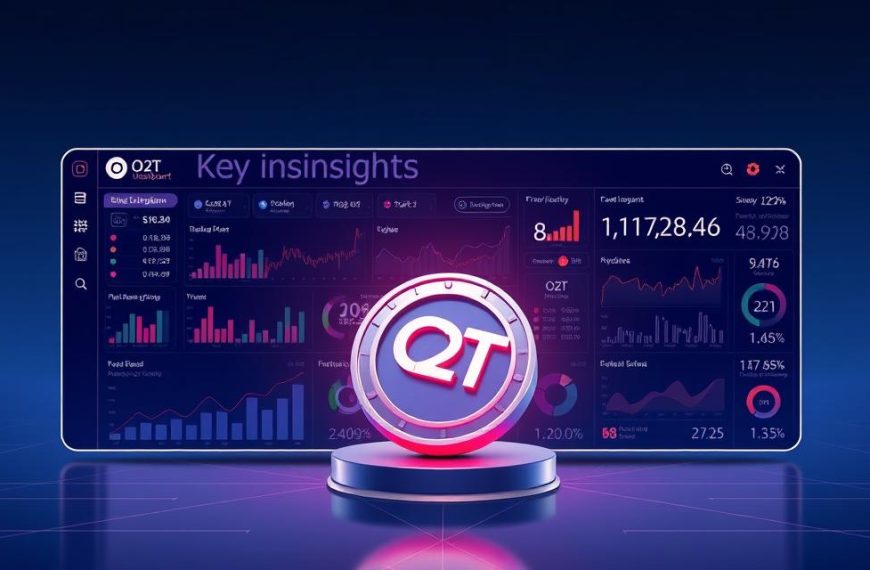This brief tour highlights ten surprising facts that link early milestones to the systems people rely on today across the world.
From Grace Hopper’s moth in a Mark II relay to Tim Berners‑Lee’s 1991 site, history meets practical modern use.
The list pairs verifiable figures with notable names. It shows how the first computer era feeds into present cloud services and everyday devices.
Key figures matter: cloud data centres handled 94% of workloads in 2021, and over 4.9 billion internet users were recorded the same year.
This piece is for a professional audience seeking concise insights to shape decisions about cloud, security, storage and software adoption.
Expect clear links between history and modern practice — from the first computer bug to the scale of the internet and the rise of cloud delivery models.
Setting the scene: why IT facts still surprise us today
Rapid narrative shifts in the industry make even seasoned professionals double‑take at some headline numbers.
The cycle from cloud to the Metaverse and now AI shows how themes rise and fall within short years.
Many technologies mature quietly until a tipping point forces broad adoption. What was niche can become essential to use today.
Scientists and engineers often lay groundwork long before public recognition. That backstory gives each statistic deeper meaning.
“Small percentage shifts matter when a large portion of the population is online; scale multiplies impact.”
- Clarify core terms so comparisons remain consistent across sources and timeframes.
- Treat surprising stats as prompts to revise capacity planning, risk and cost strategies.
- Remember structural drivers—agility, cost control and resilience—remain constant even as narratives rotate.
Later sections pair human stories with hard numbers to show how empirical insight guides decision‑making in enterprise tech and every computer project.
Origins and oddities: did you know information technology facts
Archival notes and preserved logs link early experiments to current method and language.
The first true ‘computer bug’ was a moth found in 1947
In 1947 Grace Hopper recorded a literal bug — a moth trapped in a relay of the Mark II. This anecdote fixed the computer bug label in engineering parlance and helped popularise the term debugging.
The world’s first website by Tim Berners‑Lee is still live
British computer scientist Tim Berners‑Lee published the first web page in 1991. The site remains accessible and demonstrates how a modest prototype scaled into the global web.
Ada Lovelace: the first computer programmer
Ada Lovelace wrote algorithms for Babbage’s Analytical Engine in the 19th century. Her notes show conceptual work that predated working hardware by decades and helped define early roles for the first computer.
Smartphones outmuscle the computers that guided the Moon landing
Modern smartphones offer more processing power than the Apollo guidance units used to reach the Moon. Archivists and researchers preserve logs and code so these origin stories remain verifiable.
The connected world: internet users, browsers, and online behaviour
Global connectivity is now a baseline expectation for most people and businesses. Over 60% of the global population is online, and that shift shapes product design, support and service levels.
Over 4.9 billion internet users and counting
As of 2021 there were over 4.9 billion internet users worldwide. This represents more than 60% of the population and shows year‑on‑year compound growth.
Growth drives higher volumes of data per session and greater demand on analytics, bandwidth and support capacity. Service teams must scale pipelines and plan for regionally varied network performance.
Chrome dominates with over half of users worldwide
Chrome holds 65.9% share, so front‑end teams often prioritise compatibility and performance tuning for that browser. Optimising for Chrome reduces friction for most users but does not replace broader testing.
Ages skew towards 25–34 for 32% of users, which informs content strategy, advertising buys and product roadmaps. Cloud delivery helps teams iterate faster, but reliability expectations rise across the world.
| Metric | Value | Operational impact |
|---|---|---|
| Internet users (2021) | 4.9+ billion | Capacity planning; global reach |
| Population online | 60%+ | Market access; discovery changes |
| Chrome share | 65.9% | Compatibility focus; fewer regressions |
| Age 25–34 | 32% of users | Content and ad targeting |
“Understanding internet users at scale is foundational to service design and customer success.”
Cloud computing facts that reshape how businesses use technology
Most large organisations run workloads across multiple cloud providers to balance cost, resilience and performance.
Hybrid and multi‑cloud approaches are now standard. More than 90% of global enterprises relied on hybrid cloud in 2022. Eighty‑one per cent have a multi‑cloud strategy and 84% describe their infrastructure as multi‑cloud.
Hybrid and multi‑cloud are the norm across enterprises
On average firms use 2.6 public and 2.7 private clouds. This spread helps teams avoid vendor lock‑in and tune latency for regional users.
Cloud spend and market size are soaring into the mid‑2020s
Market size is expected to reach $832.1 billion by 2025. Around 30% of IT budgets now go to cloud computing, and 36% of enterprises spend over $12 million per year on public clouds.
Top public cloud providers powering today’s services
AWS, Microsoft Azure and Google Cloud underpin a vast share of consumer and enterprise platforms. Cloud data centres handled 94% of workloads in 2021.
Why organisations report security and efficiency gains in the cloud
Many organisations report better online security after moving sensitive data into managed platforms. Improved patching, centralised controls and elastic capacity drive operational gains.
Cloud safety worries persist, with misconfiguration a key risk
Still, 75% of firms cite safety concerns, with misconfiguration the top issue. Half of corporate data already resides in the cloud, so storage, encryption and lifecycle policy matter.
“Standardise guardrails, invest in skills and automate policy enforcement to reduce risk while accelerating delivery.”
| Metric | Value | Implication |
|---|---|---|
| Hybrid adoption | 90%+ | Resilience and flexibility |
| Multi‑cloud strategy | 81% | Avoid vendor lock‑in |
| Average clouds per firm | 2.6 public / 2.7 private | Complex estate management |
| Cloud market (proj.) | $832.1B by 2025 | Increased vendor influence |
Data protection reality check: breaches, downtime, and recovery
Data breaches and outages now shape boardroom budgets as much as product strategy.
In the United States the average cost of a data breach reached $8.64 million by 2020. That figure includes remediation, fines and customer churn and often exceeds direct remediation costs.
The rising cost of a data breach in the United States
Beyond the headline number, breaches reduce revenue over time and raise insurance and compliance costs. Businesses must map critical assets and classify data to prioritise protection.
Downtime can cost thousands per minute
Organisations face an average downtime cost of $5,600 per minute. That benchmark helps translate outage exposure into board-level risk and funding decisions.
Ransomware recovery rates improve with robust backups
With proper backup software and processes, up to 97% of data is recoverable after a ransomware attack. Cloud backup adoption is accelerating; 49% of firms plan migration within three years.
Disaster recovery plans remain patchy across businesses
Only 54% of businesses had a formal disaster recovery plan as of 2021. Over a three‑year period 96% experienced an outage, and 73% reported at least one system failure.
“Test restorations before incidents to validate recovery time and point objectives.”
- Unprotected folders and unmanaged devices are common weak links—about 33% of folders lack protection.
- Malware featured in 28% of breaches in 2020, so layered controls across identity, network and data matter.
- Define RPO and RTO terms, rehearse scenarios and align IT, security and business owners on funding and metrics.
IoT scale, data size, and daily risks across the internet
A vast web of connected endpoints now feeds services, analytics and security teams around the clock.
There were over 10 billion active devices in 2021 and projections show 152,200 more join the internet each minute by 2025. This rapid growth changes how organisations plan capacity and resilience.
IoT-generated data will reach huge volumes: forecasts put the total near 73.1 zettabytes by 2025. That number stresses ingestion pipelines, long‑term storage and archival costs.
Risk, behaviour and economic drivers
Heterogeneous devices often ship with weak defaults. Those defaults expand the attack surface across the world and force tighter inventory control.
Nearly half of internet users—about 47%—use ad blockers. This shift changes measurement and monetisation for publishers and advertisers. Yet online advertising spend is still growing and may reach $763.6 billion by 2025, which sustains huge demand for targeting and fraud detection services.
Operational responses at scale
Tens of thousands of websites face hacks daily; estimates put the figure near 30,000 sites each day. SOC teams must ingest, triage and act on telemetry at scale to keep pace.
“Edge processing, secure update channels and tight inventory management reduce exposure and lower long‑term storage costs.”
| Metric | 2021–2025 | Operational impact |
|---|---|---|
| Active devices | 10+ billion (2021) | Scale for connectivity and patching |
| Devices per minute | 152,200 (by 2025) | Real‑time ingestion needs |
| IoT data | 73.1 zettabytes (by 2025) | Long‑term storage & processing |
| Web attacks | ~30,000 sites per day | Continuous monitoring & hardening |
Takeaway: Balance innovation with governance. Prioritise secure update mechanisms, edge processing and lifecycle management so the value of device data is realised without compromising resilience.
Fast‑moving frontiers: from cloud to AI and beyond
By commoditising compute and storage, public platforms removed a key barrier to large‑scale AI adoption. That change let researchers and businesses treat heavy model training as an operational cost, not a bespoke project.
Cloud paved the way; now AI spend is accelerating
Cloud computing provided elastic access to CPUs, GPUs and specialised accelerators. This made it straightforward to spin up large experiments and then scale production workloads.
Forecasts project AI spend could reach $309.6 billion by 2026, reflecting investor confidence and applied research moving into products.
Enterprise software remains a major growth area
Enterprises invested an average of $3.5 million in cloud software in 2021. That spend underlines how software platforms standardise delivery and governance across teams.
Enterprise software sales are predicted to lead growth as firms modernise stacks to shorten time‑to‑value and increase optionality.
“Infrastructure readiness — networking, identity and observability — is critical to run AI reliably at scale.”
- Prepare infrastructure and observability to support data‑intensive computing.
- Prioritise security by design, automation and architecture reviews.
- Invest in platform engineering and model governance so pilots can scale into production.
Next steps: align strategy to outcomes, measure over years, and set clear exit criteria for experiments. Internet‑scale distribution and cloud‑native patterns will keep unlocking frontier capabilities for mainstream use.
Conclusion
These highlights trace a clear line from early experiments to the systems that drive today’s services.
The round‑up stitches origin stories — from the first computer and a famous computer bug moth to the earliest web page — with scale metrics like global users and cloud reach.
Practical takeaways matter most: harden configurations, test restorations, measure user experience at scale and review SLAs, storage and network choices against clear terms and risk appetite.
People and teams excel when historical insight meets solid guardrails. As smartphones and devices multiply, attack surfaces grow, so resilience must be engineered, monitored and improved.
Use data‑driven governance to steer priorities. These facts shape a world where readiness and repeatable practice let organisations adopt new technologies with confidence.



















